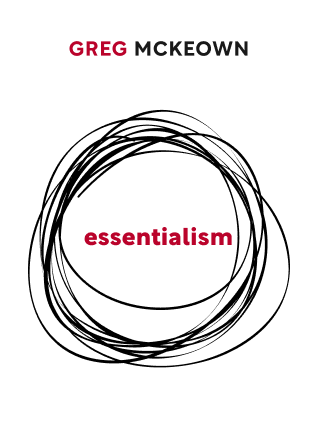

This article is an excerpt from the Shortform book guide to "Essentialism" by Greg McKeown. Shortform has the world's best summaries and analyses of books you should be reading.
Like this article? Sign up for a free trial here .
What is the way of the essentialist? How can adopting the essentialist lifestyle help you keep your life clutter-free and focus on what’s important?
The way of the essentialist is a lifestyle philosophy that is premised on the principle of ‘do less but better’. Essentialism helps you create a system for streamlining your life in a way that keeps you focused on priorities.
Keep reading to learn about the essentialist lifestyle.
The Essentialist Lifestyle
Taking the essentialist approach to your work and life is similar to how you or a professional organizer would streamline your closet. If you neglect your closet, it gets disorganized and crammed with clothes you don’t wear. You purge it periodically when it gets totally out of control. But if you don’t have an ongoing system that you stick to, you’ll keep ending up back at square one, with a disorganized closet, or you’ll discard something and regret it later.
The same thing happens to your life. With good intentions, you say yes to too many things without a sense of overall purpose and your schedule is soon cluttered and overflowing. Many activities are ongoing, and unless you have a system for purging them, they expand to fill your time automatically.
The essentialist approach to your closet — and your life — consists of three phases, in which you consider tough questions:
1) Explore options: While sorting items in a closet, you’d typically ask yourself whether you might wear an item someday. But the essentialist would ask a tougher question: Is this a favorite item that I wear often? If the answer’s no, toss it.
In your life, the key question is, is this activity essential to making my highest contribution? Part one of the book helps you determine what activities are essential for you to contribute at the highest level to your goal.
2) Eliminate the nonessentials: You have trouble getting rid of things because of sunk-cost bias. This means you place a greater value than they’re worth on things you own because you’ve invested in them, so you’re reluctant to get rid of them. To circumvent this bias, ask yourself what you’d be willing to pay for the item if you didn’t already own it. This may be the reality check you need to realize the item’s true worth.
Regarding an activity, the question could be, “if it hadn’t just popped up, would I go out of my way to seek out this activity?” If the answer is no, it’s probably not an “essential” activity. Not only must you sort out the nonessentials, whether possessions or activities, but you must also actively eliminate them. Part 2 explains how to eliminate nonessentials from your work and life in a way that garners respect from bosses and colleagues.
3) Execute routinely: For your closet to stay organized, you need a maintenance system that’s automatic, so it stays consistently organized without requiring a Herculean effort every so often. In your life, once you’ve decided what things to pursue (your highest level contribution), you need a system to make doing the important things simple. Part 4 lays out a process for doing that.
While you control what goes into your closet, in life new demands bombard you all the time.
What if every time you opened your closet, you found that people had been adding their own items? That’s what happens at work — you start your day with a plan, and by 10 a.m. you’re already off track. Or, you start the day with a to-do list, and by the end of the day, it’s longer than when you started. Or your quiet weekend gets packed with others’ errands and activities.
Essentialism Reorders Your Life
Essentialism helps you create a system for streamlining your life in a way that keeps you focused on what’s important.
- It’s a discipline you apply to determine whether requests and options get a yes or no.
- It’s a method for making difficult trade-offs between the many appealing options versus the few outstanding options.
- It’s about learning to do less but better so you can live a life true to yourself.

———End of Preview———
Like what you just read? Read the rest of the world's best book summary and analysis of Greg McKeown's "Essentialism" at Shortform .
Here's what you'll find in our full Essentialism summary :
- How to do less but to do it better
- Why you need to be disciplined in your pursuit of less
- How you can learn to say no






